by Hailey Eisman and Araxie Cass
While folk practices are often associated with the past and older ways of life, elements of folk magic are easy to spot in modern Armenian communities across the globe. The nazar, or evil eye, is a ubiquitous symbol in art, clothing, jewelry, and decoration. In addition, recent years have seen a growing public appreciation for tasseography, or the art of fortune-telling through coffee grounds as a method of communicating about difficult issues, or as a means of connecting to the past and imagining the future.
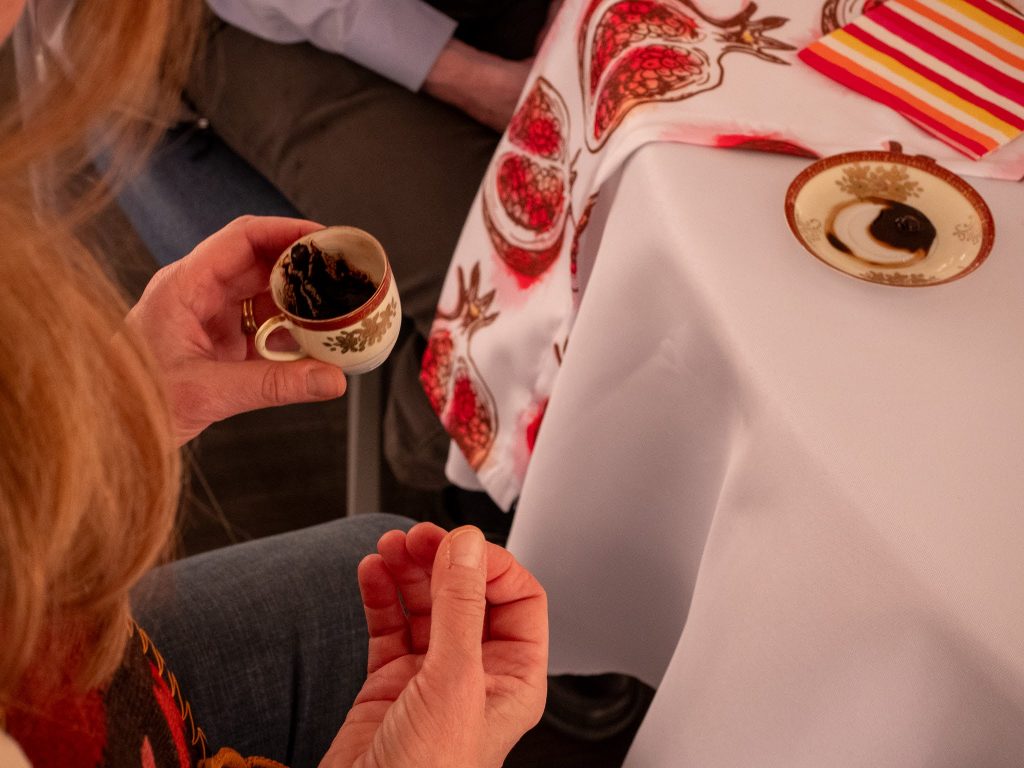
But the practice of Armenian folk magic spans beyond what we fully understand and is much older than we give credit for. There is evidence of Armenian folk magic practices in writings from the fourth century CE, and archeological evidence suggests that these practices existed long before they were originally recorded. The practice of folk magic can include anything from rituals now part of Armenian Christianity to ancient holidays and farming practices, to the spells, songs, and poetry of folk tradition.
Many people are fearful of the word “magic” but this fear comes from a narrow definition of the word encouraged by efforts to wipe out these traditional practices. Magic is often described as a practice of selling your soul to demons and other things made up out of fear, when in reality, magic has many definitions, such as “the ability to manipulate probability.” These practices are not evil but are simply rituals that we as a culture have continuously done for thousands of years.
What is Armenian folk magic?
To understand Armenian folk magic is, we must break down what folk magic is in general. The simple definition is: It is the magic of the folk or people. This can include practices or beliefs that have often been kept secret or have been synchronized to the church, surviving rules put in place by those in authority, as well as practices with no known origin passed down through the generations as part of everyday life. While everyday practices are often looked down on as simple superstitions or baseless rituals, it is important to remember that they come from a rich body of oral history and communal knowledge, and often have more complexity than is immediately apparent.
These rituals (big or small) exist to help people to understand, influence, and be in relationship with their surroundings as well as larger forces, like nature, social systems, and emotions. As they are passed down through the generations, these rituals are adapted over time with the ever-changing world of religion and culture. Folk magic can usually be traced back to pre-Christian times and many of its rituals live into recent memory.
Every culture has a form of folk magic, whether it is described that way or not. Folk magic is a collection of traditions and beliefs that come from folklore on food, the weather or cosmos, landscapes, cultural dances, plants, political events, and so on. The practices of folk magic have long been used by our communities’ to understand and control the world around us.

How can we learn about Armenian folk magic?
While there is a rich history of Armenian folk magic, it is often difficult to find written records of specific practices and beliefs. One reason for this is the systematic destruction of indigenous religious sites and artifacts that the Armenian rulers oversaw after converting the country to Christianity. In addition, the Armenian Genocide of 1915 and destruction of sacred sites, texts, and cultural works that went along with it have further diminished the resources that are available to us. In addition, many of the ones that did survive are often inaccessible to the general public, or to non-Armenian speakers.
There has been significant work done to understand Armenia’s ancient past, such as the archaeological work done at Metsamor, Karmir Blur, and Zorats Karer, but there is still much to be discovered. The lack of archaeology done in Armenia as well as much of our indigenous lands in the hands of archaeologists mostly outside of our community can create biases and prevent Armenians from learning about our ancient history and where these practices may stem from.
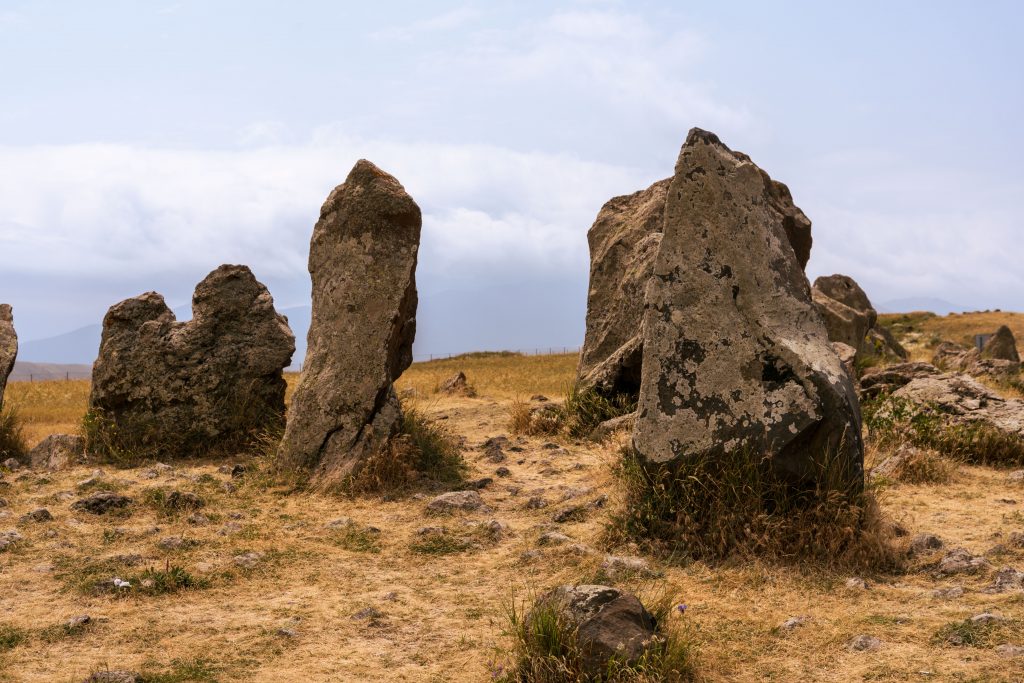
These circumstances limit our knowledge to resources that are often unverifiable and unable to be cross-referenced and create the opportunity to for the spread of incorrect information, which is an issue indigenous people have dealt with all around the world.
While there are many obstacles to learning about Armenian folk magic, there are still sources where we can learn about it in the modern day (see the reading list at the end of this piece for some examples). In many families, these practices are passed down through generations, and speaking about them with community elders can be a valuable source of information. Information on these practices can also be found in historical works dealing with ancient rituals and religion, as well as village and rural life. Armenian folk practices have even been embedded into Christian beliefs and rituals, and looking under the added Christian histories and meanings can give us clues to earlier origins.
The study and practice of folk magic calls on us to look deeper into the cultural beliefs and practices we inherit from our ancestors and communities, understanding their histories, superstitions, significances, and how they can live with us in the modern world. As the world moves towards a globalized society, a lot of folk magic practices are starting to fade from memory. So even for people who may not wish to practice, it is important to preserve and pass the knowledge on.
Practices of Armenian Folk Magic
Some elements of Armenian folk magic are traceable over thousands of years of history, even to the pre-Christian pantheon of Armenian deities. These include rituals like throwing water on Vardavar to celebrate the ancient goddess Astghik and bring the beauty, life, and prosperity that she symbolizes into our lives, or jumping over a fire on Trndz to ward off the winter’s cold and celebrate new beginnings with the coming of spring. Similarly, in times of drought, we may do rituals such as exhuming the recently deceased to quench their thirst that is causing the drought or having children dance with bread on their heads as a ritual to bring rain. Coming from ways of life supported by farming and close relationships to the land, these rituals often mark important natural events or turning points in seasonal cycles.

Folk magic rituals are often used in the forms of Vernacular Christianity or Folk Christianity. Matagh, for instance, is a ritual sacrifice that is often performed at a holy site with the help of a priest, but there are many elements of the ritual that fall outside of officially sanctioned Christian practice. In many regions, such as Artsakh, there are a variety of pre-Christian matagh sites still in use, and participants in the sacrifice bury the feet, head, bones, and skin of the animal underground or hang them from a tree, symbolically giving them back to nature. Rituals like this are not fully practiced by the church but are alive in our local communities and are passed down through the generations. Vernacular Christianity is primarily based on one or a community’s personal relationship with God within the context of cultural rituals.
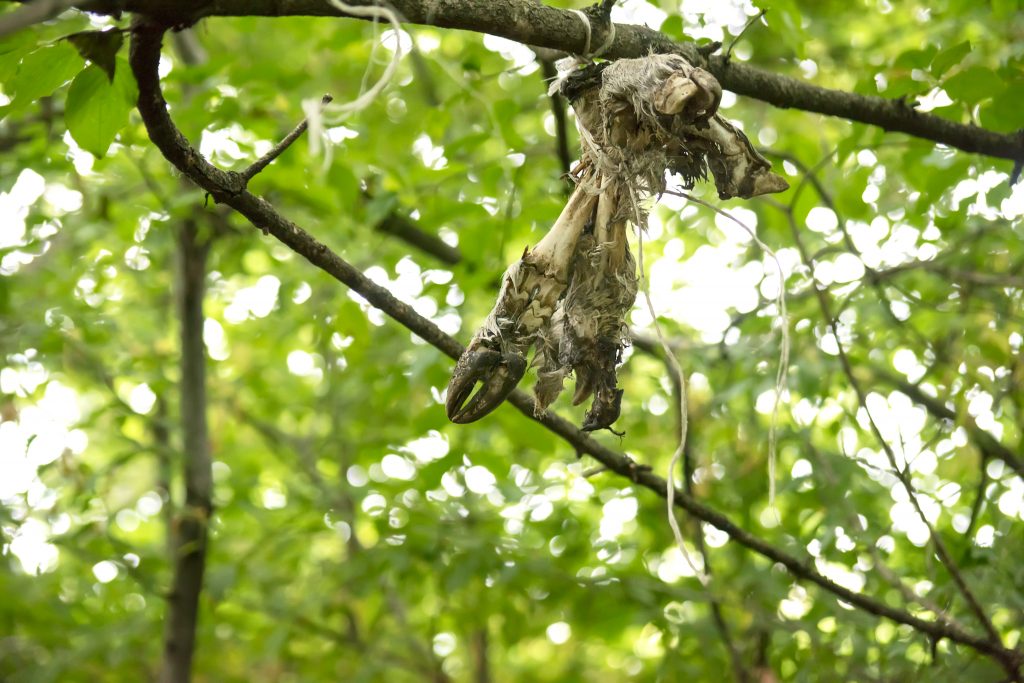
Although many folk rituals have been absorbed into the Armenian Christian tradition, one doesn’t need to be Christian to practice these rituals, especially as many stem from the pre-Christian period. The Armenian practice is quite eclectic and has taken inspiration from neighboring cultures for thousands of years. This includes cultural elements from the Mesopotamians, Assyrians, Yazidis, Hittites, Greeks, Persians, and other groups in the SWANA (South West Asia and North Africa) region.
While much of Armenian folk magic comes from indigenous Armenian lands, a large part of folk magic is adapting it to your life and where you live. So while some of Armenian folk magic is tied to Christianity, that is not all that Armenians are, and limiting ourselves to that can lead to division and strain amongst our communities. In modern times, rituals are also adapted for health reasons. For example, Armenians don’t do lead divination anymore because it is extremely dangerous and the practice of using candle wax has become more popular.
Healing Practices
The matagh, one of the most famous Armenian folk magic practices, is frequently done to thank God for blessings received in the form of healing or to ask God for blessings. A matagh is often done after a traumatic event, such as a family member’s survival from an accident or disease. It may also be performed at major life events such as weddings and births, giving the participants an opportunity to process these events through the ritual of sacrifice. The lamb (or sometimes rooster or other animal) is sometimes blessed and paraded around a church before being slaughtered and cooked for the community. Often times the food is given to specifically seven families and if you research Armenian folk magic practices further, the number seven is heavily present.
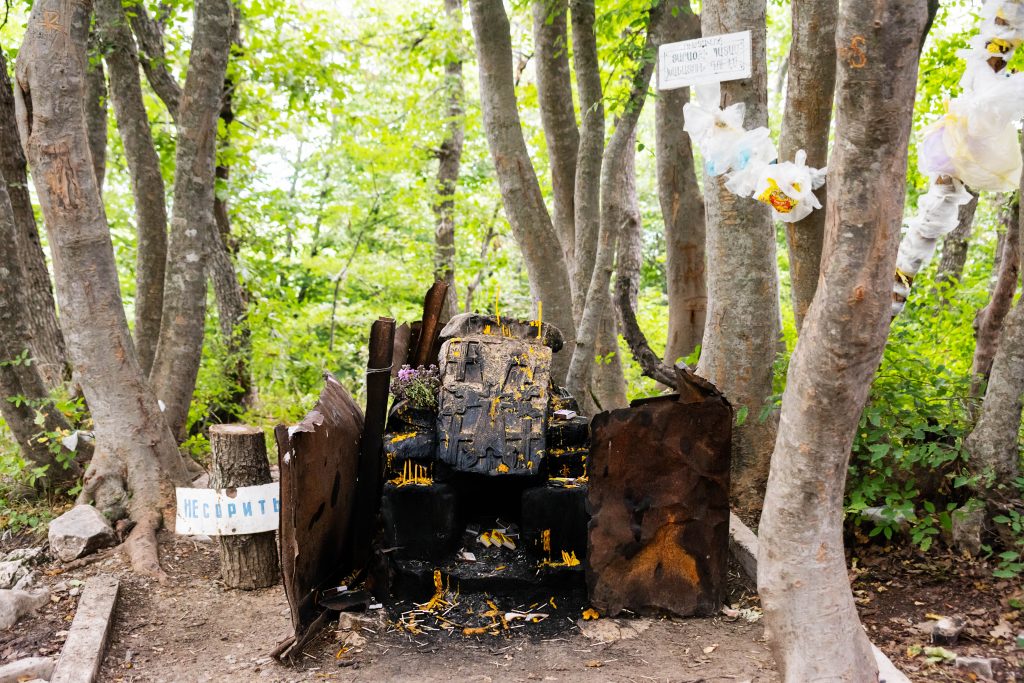
Armenian folk magic contains other healing practices, such as candle-pouring or fear-catching. This is a form of folk healing to remove fear-empowered parasitic entities from a person. In this ritual, a practitioner called a Fear Catcher will pour wax into a bowl of water above someone’s head, praying over the person to capture any fears. Fear Catchers are often women (but not always), and can be either people bestowed with mystical gifts or those who have learned divinatory arts. Fear-catching is interesting because it seems to be a form of folk healing fighting mental pain and entities preying on mental health rather than fighting physical ailments.
Veneration of Sacred Sites
Another major element of Armenian folk magic is the veneration of stones and sacred sites. However, many of them are now inaccessible to Armenians as many were destroyed the 20th century and many sites were taken apart for building materials by non-Armenian populations. This means that the practices of land veneration have had to be adapted to Armenians’ modern-day realities of displacement and diaspora.
Since many of the notable places are gone and many of the worshippers were forced to flee persecution, the way we would venerate the spirit of the locations stopped being passed down. However, some places in rural areas that are small and may seem insignificant to those on the outside have survived and harbor major influence on Armenian folk practice today.
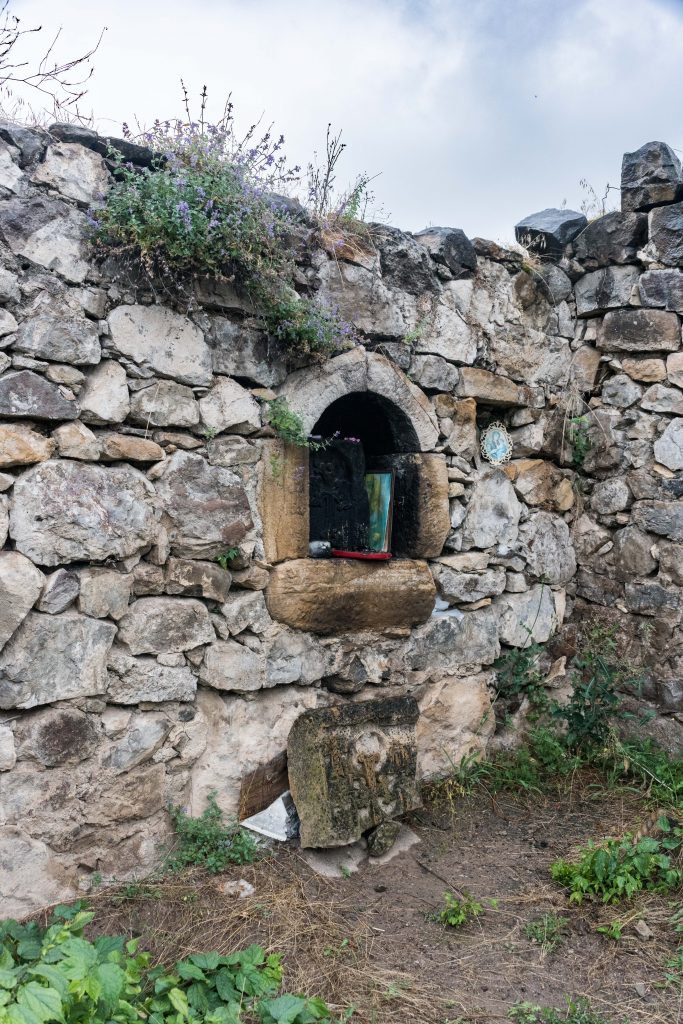
Armenians’ form of sacred site veneration is very unique and is very much alive. It is mostly done through making pilgrimages to these sites at certain times of the year, praying to the churches and shrines themselves, and giving offerings such as saint images, lighting incense and candles, and ritual sacrifices like matagh. This form of veneration often happens at locations that are old, in ruins, and those not considered canon churches. A prime example is the Tukh Manuk. These are small shrines in rural areas that can fit very few people and are believed to have been venerated since pre-Christian times and are still used today. Hundreds of people may show up to Tukh Manuks on certain holidays and pray around them, asking for blessings and healing. It is even believed that trees and waterways near the shrine are holy and can also provide blessings.
Connecting to the Ancestors
Like many folk magics, Armenian tradition includes practices that span over generations or are ways of connecting with ancestors. One example is the Saint of the Home or tan surb, a bible, a copy of the Book of Lamentations, or other text seen as holy. These may be written by ancestors in a family, and are passed down through generations to the point that the texts is deemed alive and are often kissed, given offerings such as prayer, candles, and incense in exchange for healing. They are venerated by individuals and families, and even churches will use them in veneration, with people making pilgrimages to kiss these holy books.
Khachkars are also often deemed tan surbs, especially if they are on the property of the family or the tombstones of ancestors. Sometimes families will find small pieces of the stone broken off the khachkar and take it home and venerate it, passing it through generations. People also will make pilgrimages to some well-known khachkars to ask for their blessings.
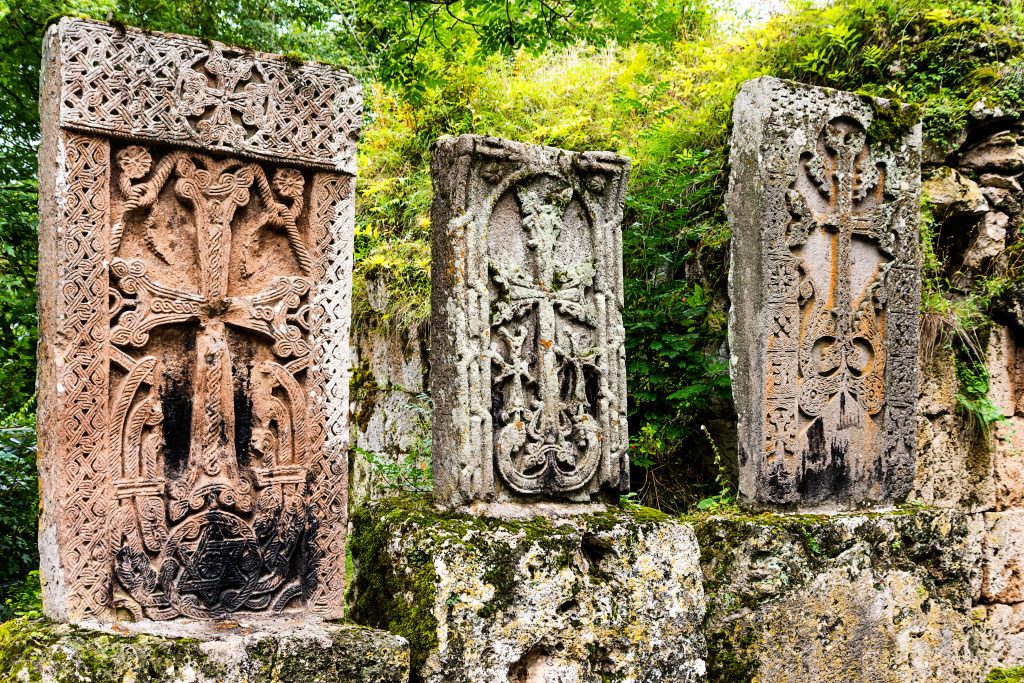
Bringing food and burning incense at the graves of deceased family members is a form of ancestor veneration within Armenian tradition. The age and the cause of death could even determine the food provided to the person who has passed. Ancestor veneration is one of the oldest forms of spiritual practice in human history.
These are just a few of the many elements of folk magic that Armenians have practiced over the years, and still do today. Although these descriptions are based on research sources listed below, the practices and symbolism of folk magic are not absolute, and may be seen differently by different people and in different contexts. If you’d like to join the conversation about Armenian folk magic, feel free to send us an email at submit@azadarchives.com
For more resources on Armenian Folk Magic, follow @armenianfolkmagic on Instagram and Twitter and check out the Armenian Folk Magic Library.
Works Cited
1Abrahamian, Levon, and Nancy Sweezy, editors. Armenian Folk Arts, Culture, and Identity. Indiana University Press, 2001.
Agadjanian, Alexander, editor. Armenian Christianity Today: Identity Politics and Popular Practice. Ashgate Publishing Limited, 2014.
Antonyan, Yulia. “Religiosity and religious identity in Armenia: Some current models and developments.” Acta Ethnographica Hungarica, vol. 56, no. 2, 2011, pp. 315-332. ResearchGate.
Khorenatsi, Movses. The History of Armenia. Translated by Troy Azelli, Amazon Digital Services LLC – Kdp, 2020.
Merian, Sylvie L. “Protection against the Evil Eye? Votive Offerings on Armenian Manuscript Bindings.” Suave Mechanicals: Essays on the History of Bookbinding, vol. 1, 2013, pp. 42-91.
Mkhitaryan, Lilit, director. Fear Catcher. Chai Khana Media, 2019. chaikhana.media, https://chaikhana.media/en/stories/897/fear-catcher.
Petrosian, Irina, and David Underwood. Armenian Food: Fact, Fiction & Folklore. Yerkir Publishing, 2006.
Prtavyan, Amaliya. “Magic and its Social Context in Contemporary Armenia: From Belief Narratives to Family Relations Master’s Thesis.” University of Tartu Faculty of Arts and Humanities Institute of Cultural Research, 202.
Siekierski, Konrad. “Kissing the Book, Making a Vow: An Illustrated Story of an Armenian Religious Practice.” Smithsonian Center for Folklife & Cultural Heritage Magazine, 2020. https://folklife.si.edu, https://folklife.si.edu/magazine/illustrated-story-of-armenian-religious-practice.
Villa, Susie Hoogasian, and Mary Allerton Kilbourne Matossian. Armenian village life before 1914. Wayne State University Press, 1982.
